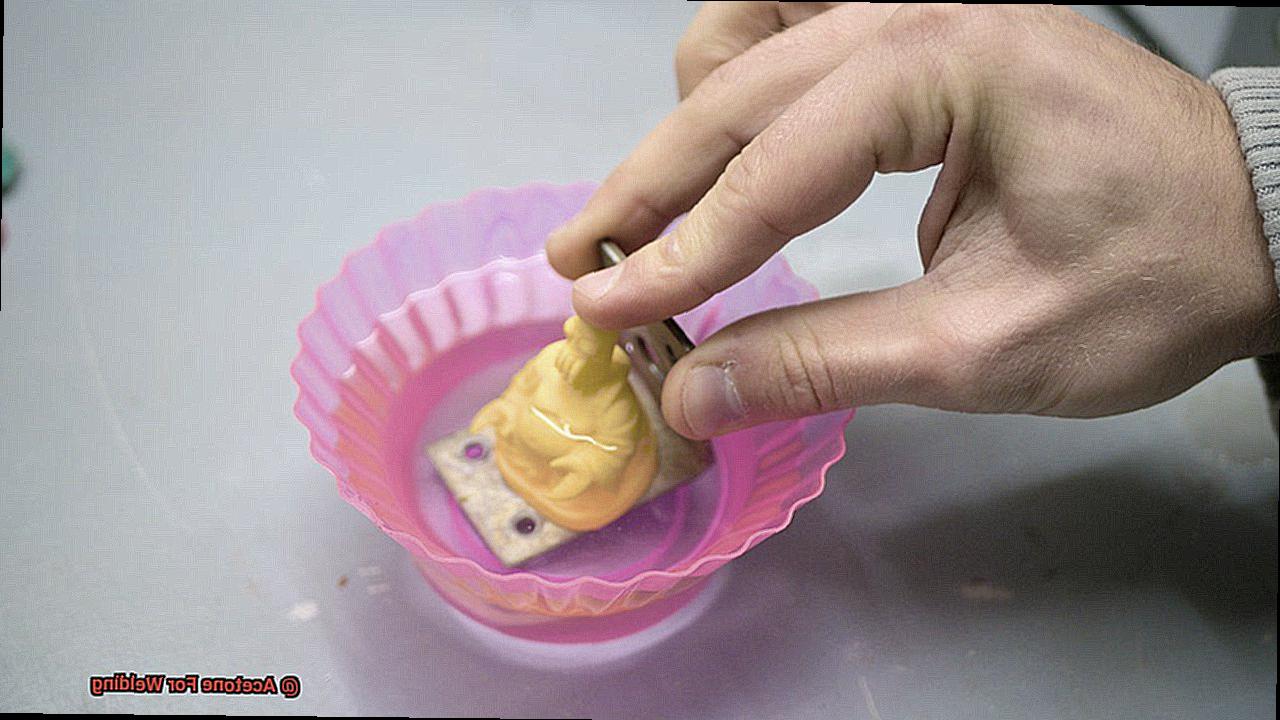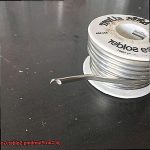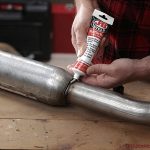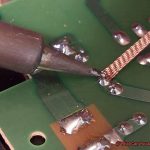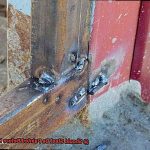Do you ever marvel at the flawless and precise welds achieved by professional welders? Well, it may come as a surprise that acetone, a common household item, is the secret behind their success. That’s right – this versatile solvent found in your bathroom cabinet can also be an indispensable tool for welding applications.
When it comes to welding, cleanliness is crucial for achieving top-notch welds. Any residual oils, contaminants or impurities on the surface can compromise the quality of the connection and even pose safety hazards. This is where acetone comes in as a game-changer for welders.
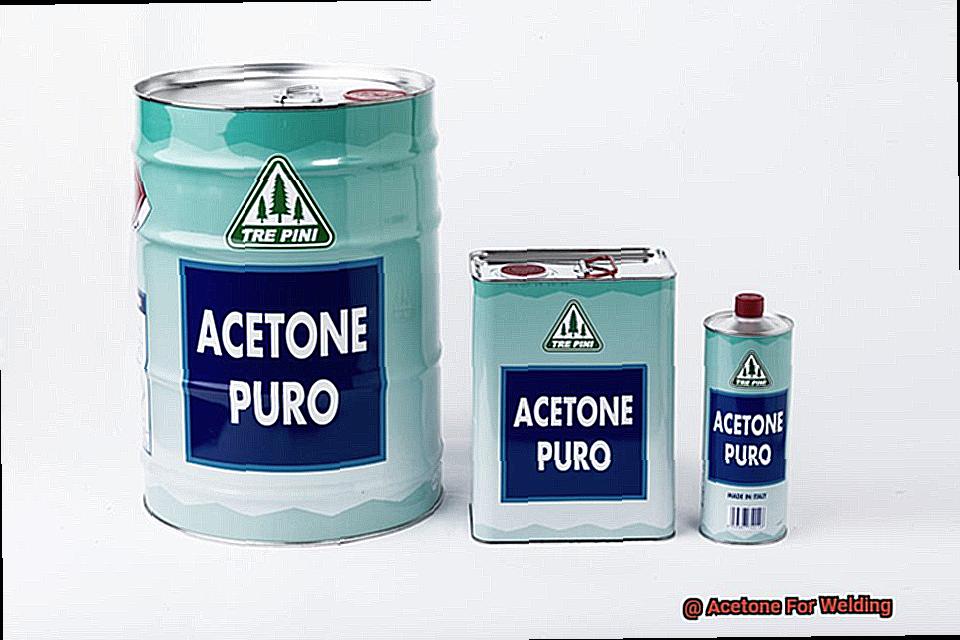
Acetone is a powerful solvent that dissolves greases and oils with ease, leaving surfaces free of any impurities that could affect weld quality. It evaporates quickly without leaving any residue or film that could interfere with the welding process. This makes it particularly useful for delicate welding tasks that require precision.
Furthermore, welders use acetone to clean their tools after a job as it helps to prevent rust and other forms of corrosion. It’s a cost-effective alternative to expensive cleaning products and can help extend the lifespan of welding equipment.
So, let’s get started.
What is Acetone?
Contents
Acetone is a superhero solvent that saves the day in various industries. This colorless, flammable liquid is famous for its signature sweet scent and excellent cleaning properties. It’s no surprise that acetone is commonly used in the manufacturing industry for cleaning and degreasing various materials, but did you know that it’s also a secret weapon for welders?
Welding involves melting two metal surfaces together by heating them to a high temperature. However, during the welding process, metal surfaces can become contaminated with impurities such as oil, grease, dirt, or rust. These impurities can weaken the weld and compromise its strength and durability.
With its amazing cleaning prowess, acetone is perfect for removing contaminants from metal surfaces. This powerful solvent dissolves impurities on the surface with ease, leaving it clean and ready for welding. By using acetone to clean the metal surface, welders can ensure a clean and smooth surface for better adhesion and stronger welds.
To use acetone for welding, simply apply it to a clean cloth and use it to wipe down the metal surface that needs to be welded. The acetone will dissolve any contaminants on the surface and leave it clean and ready for welding. But be sure to allow the acetone to evaporate fully before starting the welding process to avoid any potential fire hazards.
It’s important to note that acetone should be handled with care as it is highly flammable and can cause skin irritation or respiratory issues if not used properly. Protective gear should always be worn when working with acetone, and proper ventilation is crucial.
In addition to being an excellent cleaning agent, acetone can also be used as a fuel for certain types of welding torches. In this case, acetone is mixed with oxygen to create an acetylene-like flame that can be used for cutting or welding metal. However, this method is not as common as other types of welding fuels and should only be attempted by experienced welders.
Acetone is a versatile and powerful solvent that can help welders achieve cleaner and stronger welds. Its cleaning properties make it an effective tool for removing impurities from metal surfaces, but as with any chemical substance, proper safety precautions should always be followed.
Uses of Acetone in Welding
This humble solvent is a must-have tool for any welder as it offers numerous benefits that make it an invaluable asset. Let’s take a closer look at the many uses of acetone in welding.
One of the primary uses of acetone in welding is its ability to clean and prepare metal surfaces. Before welding, it’s crucial to ensure that the metal surface is free from any impurities such as oil or grease that could potentially affect the quality of the weld. Acetone makes this job easy by removing all impurities from the metal surface, resulting in better adhesion and stronger welds.
Apart from cleaning metal surfaces, acetone is also used to clean welding equipment such as welders, torches, and nozzles. Any dirt or debris on the equipment can cause blockages or damage, which can lead to poor quality welds. Therefore, keeping the equipment clean is essential for achieving high-quality welds.
Acetone is also an excellent solvent for removing adhesives and other materials present on metal surfaces. This property is especially useful when working with metals coated with paint or other coatings that need to be removed before welding.
In the event of any spills or drips during welding, acetone can be used to clean them up immediately. This step is critical as spills left unchecked can pose a fire hazard.
Finally, acetone can also be used as a fuel for some welding torches. It burns cleanly and efficiently, making it an excellent alternative to traditional fuels such as propane or acetylene.
Benefits of Using Acetone for Welding
If you want to take your welding game to the next level and achieve high-quality welds, acetone is the solution you’ve been searching for. This unsung hero of welding offers a wide range of benefits that will make your welding projects a breeze.
Acetone is an excellent cleaner and degreaser. With its powerful solvent properties, it can effectively remove any oils, grease, or other contaminants from welding surfaces. By ensuring that surfaces are clean and free from impurities, using acetone helps you achieve a perfect weld.
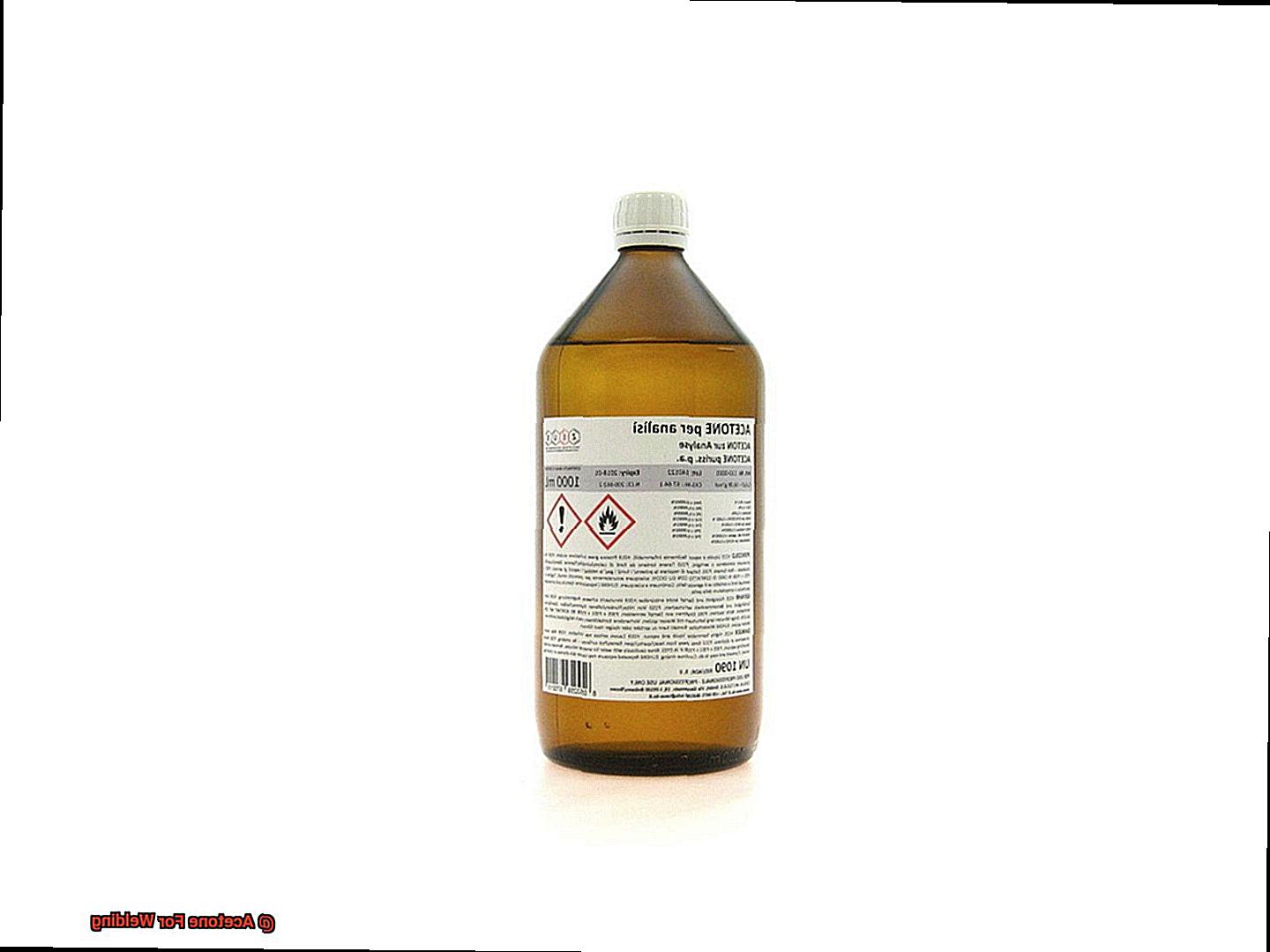
But acetone doesn’t stop there. It can also remove welding residues such as excess flux or slag quickly and easily, making it easier to clean the surface after welding. This means there’s no leftover residue that could interfere with the weld’s strength, ensuring your welds remain robust and reliable.
Acetone can also prepare surfaces for welding by removing rust or corrosion. By cleaning the surface, you’ll be able to achieve a better-quality weld that’s both stronger and more durable.
One of the most significant benefits of using acetone in welding is its ability to improve adhesion between welded surfaces. By removing any contaminants that could interfere with the bond, you’ll get a stronger weld that’s less likely to fail.
Finally, using acetone to clean and prepare surfaces for welding can significantly reduce the chances of welding defects such as porosity, lack of fusion, and undercutting. With acetone, your welds will be of higher quality and less likely to fail.
Acetone is the must-have tool for any welder. Its versatility and effectiveness make it essential for cleaning and preparing surfaces for welding, improving adhesion between welded surfaces, and reducing the chances of defects and failures.
Safety Precautions When Using Acetone for Welding
As a welder, you know how powerful acetone can be in your line of work. But with great power comes great responsibility, and it’s important to prioritize safety when handling this highly flammable and volatile liquid. Here are some essential safety precautions to keep in mind when using acetone for welding.
- Firstly, proper ventilation is paramount when working with acetone. The fumes from this chemical can be harmful if inhaled, and prolonged exposure can lead to dizziness, headaches, or even unconsciousness. So always work in a well-ventilated area or use a respirator to protect your lungs.
- Secondly, it’s crucial to wear the appropriate PPE when handling acetone. Make sure to wear gloves, safety glasses, and a lab coat or apron to protect your skin from direct contact with the chemical. And don’t forget about footwear – closed-toe shoes with non-slip soles will help prevent slips and falls in the workplace.
- Acetone is highly flammable and volatile, making it essential to keep it away from any sources of ignition. That means storing it in a cool, dry place away from heat sources like open flames, sparks, or hot surfaces. And always remember to use caution when handling acetone near these potential ignition sources.
- Lastly, spills or leaks must be handled with extreme care. If any spills occur, use an absorbent material such as sand or sawdust to clean it up immediately. Never attempt to clean up acetone spills with water as this could cause the chemical to spread further and increase the risk of fire.
How to Use Acetone for Welding
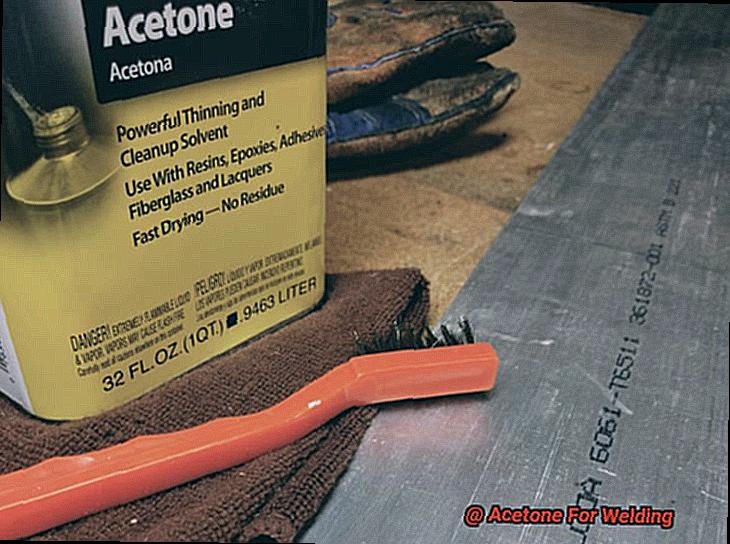
How to Use Acetone for Welding: A Comprehensive Guide
Welding requires precision and attention to detail, and one of the most important steps in the process is preparing the metal surfaces. That’s where acetone comes in handy. This colorless, volatile liquid is a versatile solvent that can be used to clean and prepare metal surfaces for welding.
Safety First
Before using acetone for welding, it’s crucial to prioritize safety. Acetone fumes can be harmful when inhaled, so always work in a well-ventilated area. Additionally, wear protective gloves and goggles to avoid any contact with your skin or eyes.
Cleaning and Preparing Metal Surfaces
To prepare a metal surface for welding, start by cleaning it thoroughly with a wire brush or sandpaper to remove any rust or debris. Then, soak a clean, lint-free cloth or rag with acetone and use it to wipe down the surface. Make sure to apply the acetone evenly and allow it to evaporate completely before starting the welding process.
Acetone evaporates quickly, leaving behind a clean and dry surface that is ready for welding. However, it’s essential to note that acetone should only be used on non-porous metals such as aluminum, steel, and titanium. Using it on porous metals like cast iron or brass can cause them to become brittle and crack.
Removing Weld Spatter
Weld spatter is the unwanted material that can splatter when welding, leaving behind unsightly marks on metal surfaces. Fortunately, acetone can also come in handy for removing weld spatter. Simply apply a small amount of acetone to a clean cloth and wipe away the spatter. Always use fresh acetone for each cleaning job to avoid contamination.
Using Acetone as Fuel
Did you know that acetone can also be used as fuel for oxyacetylene torches? When mixed with oxygen, acetone burns at a high temperature and can be used to cut or weld metal. This method should only be used by experienced welders and with proper safety precautions in place.
VZUfq0yrtv4″ >
Conclusion
In conclusion, acetone is a must-have tool for welders looking to achieve exceptional results. With its powerful solvent properties, acetone can solubilize and clean organic compounds, making it perfect for removing contaminants from metal surfaces before welding. It’s also an excellent cleaner and degreaser that can quickly and easily remove welding residues such as excess flux or slag.
But that’s not all. Acetone can even prepare surfaces for welding by removing rust or corrosion, resulting in a better-quality weld that’s both stronger and more durable. By using acetone, you can reduce the chances of defects and failures while ensuring high-quality welds every time.
However, it’s important to remember that safety should always come first when working with acetone. Protective gear should be worn at all times, proper ventilation is crucial, and spills or leaks must be handled with extreme care. By following these guidelines, you can ensure a safe working environment for yourself and those around you.
In summary, if you’re serious about welding or aspire to become a pro welder someday, make sure you have acetone handy in your workshop. Its versatility and effectiveness make it an essential tool for cleaning and preparing surfaces for welding while improving adhesion between welded surfaces.
